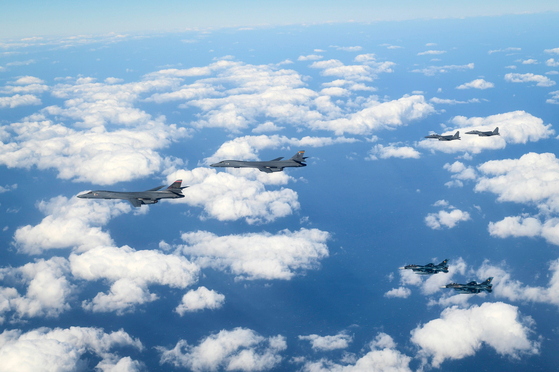Nordic spaceports emerge
Nordic Spaceports Emerge Scandinavia Pioneers the New Frontier of Satellite Launching
1. A Bold Leap into Space
Across the Nordic region, an audacious and increasingly tangible ambition is unfolding the transformation of Arctic and sub Arctic territories into thriving spaceports. From northern Sweden's Kiruna to Norwegian island clusters and Finnish Lapland, governments, private developers, and European space agencies are strategically positioning these remote sites for satellite launch operations. These efforts signal a shift from traditional equatorial space bases to high latitude hubs, enabling polar orbit access and strengthening Europe’s independent capability in the global space economy.
2. Why the Nordics? Geography Meets Opportunity
Nordic regions align geographically with optimal trajectories for polar and sun synchronous satellite deployments crucial for weather monitoring, Earth observation, science, and reconnaissance missions. The remote expanses of the Arctic present minimal population disruption and noise concerns, reducing regulatory bottlenecks. With expansive airspace and minimal maritime activity, these locations facilitate safer launch corridors. Growing global demand for small satellite constellations, especially for climate and security purposes, only amplifies the attractiveness of these high latitude launch sites.
3. Public Private Synergy on an Industrial Frontier
The Nordic spaceport revolution is coming to life through tight cooperation between government bodies and private aerospace firms. Swedish and Finnish ministries of transportation and space have launched regulatory roadmaps to streamline licensing, environmental review, and international coordination. Simultaneously, startups and aerospace players are investing in launch infrastructure, integration facilities, and vertical support services. Norway, for instance, is reportedly collaborating with satellite manufacturers and defence agencies to establish a one stop shop for polar launch operations. This unique public private synergy is essential to the region’s aspiration to become Europe’s trusted launch hub.
4. Enabling Europe’s Space Autonomy
Historically, Europe has depended on equatorial sites like French Guiana or Baikonur for orbital access. The emergence of Nordic spaceports represents a significant pivot. They provide Europe with a sovereign platform for polar orbit launches, mitigating geopolitical risks tied to overseas dependencies. if addressing climate change, fostering high end sciences, or reinforcing telecommunications, European stakeholders now gain strategic latitude. For Nordic nations, participation enhances regional prestige and offers access to national space programs, R&D opportunities, and international scientific partnerships.
5. Economic Boost for Remote Communities
Beyond geopolitical significance, spaceport projects promise tangible economic dividends for sparse, often economically lagging regions in the North. Construction, aerospace facility operations, launch provisioning, and hospitality for staff and visiting teams could inject millions of euros and job opportunities into these communities. Proposals include workforce training programs, indigenous employment initiatives, and technical trade school partnerships. While initial investments are substantial, the long term promise a steady cadence of small satellite missions, recurring contracts, and spin off industries offers a path toward sustainable economic transformation for remote Arctic towns.
6. Environmental Safeguards and Arctic Resilience
The Arctic face of space launch brings with it significant environmental responsibility. The Nordic partners are committed to embedding environmental resilience into spaceport operations. Regulatory frameworks mandate thorough environmental impact assessments and protections for fragile wildlife habitats breeding grounds, migratory routes, and permafrost terrain. Carbon accounted logistics plans prioritize low emission rockets, local fuel sources, and rapid response clean up strategies. These efforts reflect an ethos central to Nordic policy pursuing technological advancement hand in hand with ecological stewardship, especially in climate sensitive zones.
7. Tensions, Technical Hurdles, and Collaboration
Despite momentum, Nordic spaceport initiatives face real hurdles. Launch reliability in extreme Arctic conditions subzero climates, ice buildup, strong winds requires novel technical countermeasures de icing systems, insulated pad designs, and weather tolerant electronics. Regulatory harmonization across multiple jurisdictions (this includes the EU, Norway, and other Arctic stakeholders) demands precise navigation of international treaties, aerospace laws, and military coexistence protocols. Furthermore, public acceptance and indigenous partnership remain critical; meaningful dialogue and benefit sharing ensure that communities see tangible returns rather than just disruption or visual pollution.
8. Toward a Polar Conscious Space Era
Despite daunting challenges, the Nordic spaceport vision continues to expand in ambition and execution. Kiruna has already begun hosting Arctic test launches; Norway’s Andøya is planning to offer rapid response micro satellite services; Finland’s Lapland is studying vertical launch complexes and high bandwidth integration labs. Once online, frequent satellite launches could support global climate monitoring, high speed polar communications, and responsive Earth observation. Beyond that, operational experience in Arctic conditions could feed into future deep space missions, high altitude science, and navigation for polar flights.
Final Thought Northern Lights Meet Rocket Launches
The emergence of Nordic spaceports is more than a technological novelty it’s a geopolitical and environmental milestone. It reflects the maturation of Europe’s aerospace independence, the forging of resilient economies in remote zones, and the integration of high tech infrastructure into fragile ecosystems. If cultivated with care, Nordic spaceports could lead Europe’s ascent into space sovereignty while showcasing how cutting edge innovation can coexist with, and uplift, indigenous communities and nature’s frozen frontiers. The space age is moving north and the North may just define the next frontier.





 South Korea, U.S., Japan conduct air drills with B‑52 bomber amid North Korea concerns
South Korea, U.S., Japan conduct air drills with B‑52 bomber amid North Korea concerns  Stevens Point tests storm sirens ahead of system upgrade
Stevens Point tests storm sirens ahead of system upgrade  Stevens Point, Wisconsin, tests upgraded storm sirens as part of emergency system maintenance
Stevens Point, Wisconsin, tests upgraded storm sirens as part of emergency system maintenance  New National Academic Credit Bank
New National Academic Credit Bank  Heavy Rainfall Triggers Urban Flooding in Central India
Heavy Rainfall Triggers Urban Flooding in Central India